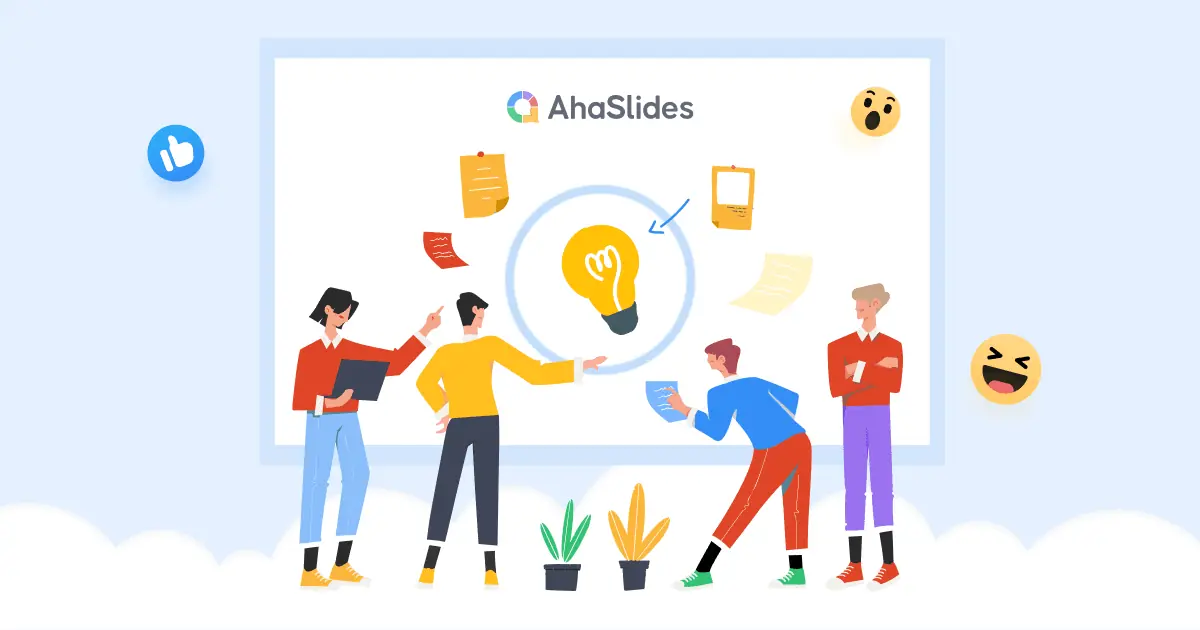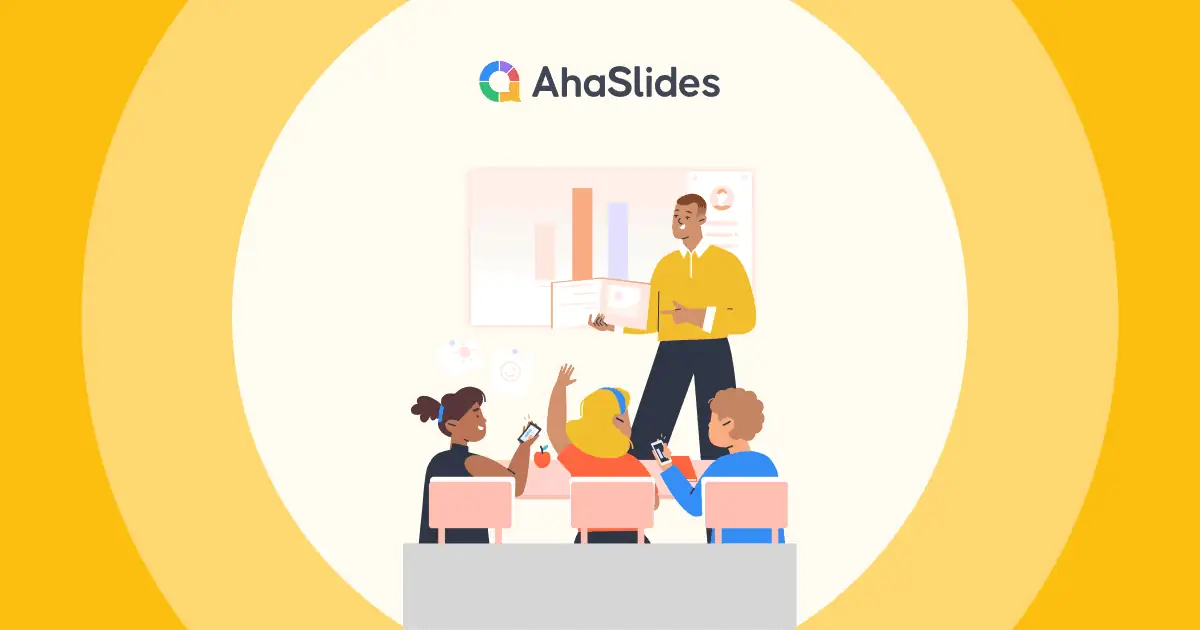Nieuw bij online lesgeven? De voor- en nadelen van e-learning kunnen een beetje zijn niet helder aanvankelijk.
Toch, met onze klaslokalen en onze wereld steeds meer afgelegen, er is nooit een beter moment geweest om te leren over het wat, waarom en hoe van digitaal onderwijs.
Hier is een uitgebreide lijst met 20 voor- en nadelen van e-learning in een live virtueel klaslokaal, evenals 4 gratis tools dat kan uw klassen helpen meer studenten op afstand te betrekken!
Uw gids voor de voor- en nadelen van e-learning
- De 12 voordelen van e-learning
- De 8 nadelen van e-learning
- 4 gratis tools voor het live virtuele klaslokaal
De 12 voordelen van e-learning
1. Flexibiliteit
Laten we met het voor de hand liggende beginnen.
De mogelijkheid om van absoluut overal te leren, zonder te hoeven pendelen, is waarschijnlijk een van de grootste voordelen van e-learning.
Het is een absolute reddingslijn voor studenten die…
- Leven in afgelegen gebieden.
- Moet krijgen openbaar vervoer naar school.
- Moet dichter bij huis zijn medische of andere redenen.
En het gaat hier niet alleen om geografische flexibiliteit. Flexibiliteit in de tijd betekent dat docenten die veel zeggenschap hebben over hun eigen lesrooster, hun online lessen kunnen inrichten op basis van het leven van hun leerlingen.
Als het een mooie dag buiten is en jij bent een van die 'stoer' leraren, kunnen uw studenten er geen probleem mee hebben om de les voor vanavond te verplaatsen.
2. Enorme boost voor onafhankelijke vaardigheden

Het feit dat groepswerk bij leren op afstand niet zo eenvoudig is, hoeft niet per se slecht te zijn. Het legt meer de nadruk op onafhankelijk werk, dat zich later in het leven waarschijnlijk zal vormen het merendeel van het werk dat studenten doen.
Dit is vooral handig als je lesgeeft aan leerlingen van de middelbare school. Meer solowerk bereidt hen goed voor op de universiteit, waar ze grotendeels zelfstandig aan de slag moeten.
Dit wil natuurlijk niet zeggen dat groepswerk volledig van tafel is. Met de meeste software voor videogesprekken breakoutruimtes, waar studenten groepswerk kunnen uitvoeren in een apart videogesprek voordat ze weer deelnemen aan het hoofdgesprek.
3. Voorbereiding op een verre toekomst
Van alle voor- en nadelen van e-learning is dit waarschijnlijk het meest bepalend voor de toekomst van uw studenten op de lange termijn.
We weten allemaal dat we op weg zijn naar een toekomst voor werk op afstand, maar de statistieken zeggen dat het wellicht sneller zal gebeuren dan je zou denken:
- Rond 2025 70% van de Amerikaanse beroepsbevolking werkt minimaal 1 werkweek per maand op afstand.
- Na de pandemie van het Coronavirus wordt verwacht dat het aantal permanente externe werknemers in 2021 zal stijgen verdubbelen van 16.4% naar 34.4%.
We hebben waarschijnlijk geen glazen bol nodig om te zien dat Zoom-bellen een belangrijke rol zal spelen in de toekomst van je studenten. Het lijkt misschien niet zo'n vaardigheid om ze deze vaardigheid nu aan te leren, maar vertrouwdheid met online videobellen zal ze later zeker goed van pas komen.
4. Veel meer interactief
De trieste waarheid van het moderne schoolsysteem is dat het helemaal niet modern is. We onderwijzen onze leerlingen nog steeds grotendeels via dezelfde eenzijdige informatiestroom als in de Victoriaanse tijd.
E-learning geeft ons de kans draai het script om.
De online interactieve tools die in 2021 beschikbaar zijn, stellen leraren in staat hun leerlingen echt te betrekken door middel van tweerichtings- en groepsgesprekken. Hier zijn een paar manieren om leerlingen te betrekken met weinig voorbereiding...
- Q & A – Een overzichtelijke vraag-en-antwoordsessie waarin leerlingen anoniem (of niet) vragen kunnen stellen aan de docent over de leerstof. Deze vraag-en-antwoordsessies kunnen worden opgeslagen om later terug te kijken.
- Live peilingen – Meerkeuzevragen die realtime worden gesteld en waar leerlingen thuis op stemmen. Deze kunnen worden gebruikt om meningen te verzamelen of hun begrip van een onderwerp te testen.
- Brainstormen – Open vragen en woord wolken Geef uw studenten de ruimte om vrijelijk hun ideeën te uiten en de ideeën van anderen te bespreken.
- quizzen – Een superleuke, op punten gebaseerde methode om het begrip in een team of solo te testen is een live-quizIn sommige softwareprogramma's kunnen de antwoorden van elke leerling op de quizvragen worden gekoppeld aan een analyserapport.
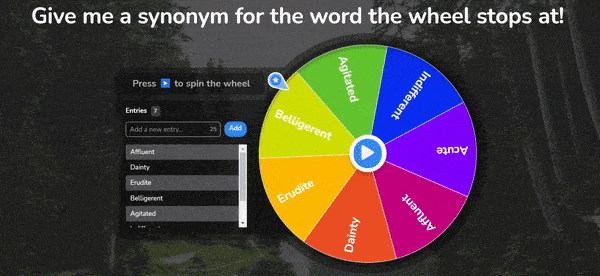
Verhef stemmen, steek handen op.
Bekijk deze engagement-sjabloon met 12 dia's op AhaSlides. Polls, ideeënuitwisselingen, quizzen en spelletjes – geen download nodig. 100% gratis!
5. Het gebruik van online documenten is enorm superieur

Zoals we al zeiden, is onderwijs niet het enige dat in 2020 online is gegaan. Ook collaboratieve online software, zoals Miro, Trello en Figma, zijn rond de eeuwwisseling echt een stap verder gekomen.
Voor leerkrachten was een van de grootste voordelen van e-learning van de afgelopen jaren Google Drive Het stelt hen helemaal gratis in staat om documenten en mappen te maken en te delen, huiswerk bij te houden en met andere docenten samen te werken aan materiaal voor studenten.
Voor studenten betekent toegang tot gedeelde mappen dat alles al perfect voor hen is georganiseerd. Ze kunnen reageren op alles wat ze niet begrijpen en die vragen laten beantwoorden door de docent of medestudenten.
6. Super groen
Hier is één van de voor- en nadelen van e-learning, die een enorme impact op de toekomst van uw studenten kan hebben.
Overschakelen naar online leren betekent overstappen van energie verbruiken Op een fysieke school. Verlichting, gas, apparatuur, enzovoort, het is allemaal bespaarde energie! En dan hebben we het nog niet eens over het feit dat een gemiddelde school jaarlijks letterlijk miljoenen liters brandstof kan besparen op vervoer voor leerlingen en leraren.
Natuurlijk heeft dit veel positieve gevolgen. Naast dat het ieders toekomst ten goede komt, zul je er waarschijnlijk ook een behoorlijk positief effect van merken in je eigen portemonnee.
7. Gemakkelijk te organiseren en samen te vatten
In het offline model zijn lessen slechts korte, informatieve momenten die de strijd moeten aangaan met de dagelijkse afleidingen van een opgroeiende student. Het is vaak moeilijk voor een student om zich iets te herinneren waar hij/zij gisteren nog over leerde.
Online is dit veel minder een probleem. Studenten kunnen toegang tot eerdere informatie veel, veel gemakkelijker:
- Q&A - Een schriftelijke vraag-en-antwoordsessie houdt in dat alle vragen die in een les worden gesteld, worden gelogd.
- Opnamesessies – Met live videosoftware kunt u uw les opnemen en het geheel, of geselecteerde delen ervan, met uw leerlingen delen.
- gedeelde mappen – Alle studenten hebben toegang tot vraag-en-antwoordlogboeken, video-opnamen, documenten, materialen en nog veel meer via gedeelde online mappen.
Bij e-learning is alles permanent. Er zijn geen eenmalige lessen, discussies of opiniepeilingen; alles wat u onderwijst of bespreekt met uw studenten kan zijn opgenomen, gedocumenteerd en verzocht wanneer informatie moet worden herzien.
8. Veel toezicht
Je zou denken dat het voor kinderen makkelijk is om de teugels te laten vieren als het enige wat hen bezighoudt met leren een camera is.
Als ouders ook thuiswerken, is er voor studenten veel meer reden om thuis te blijven. gericht op hun leren.
Uiteraard is er ook technologie om de hiaten op te vullen. Er zijn verschillende stukjes gratis software om mee te kijken op de computerschermen van studenten, de controle over het scherm over te nemen en het scherm van de student te vergrendelen als hij/zij niet wil meewerken.
9. Pandemisch bewijs
U heeft het waarschijnlijk zelf al bedacht: e-learning is de beste manier om uw opleiding voort te zetten als de volgende pandemie uitbreekt.
Hoewel Coronavirus een beetje een rommelige testrun was voor e-learning, kunnen we aannemen dat docenten en studenten veel beter voorbereid de volgende keer. Wanneer het gebeurt, kunnen regeringen en scholen e-learningprocedures financieren en toepassen om ervoor te zorgen dat het leren ononderbroken wordt.
Er is minder training nodig en studenten zijn minder tijd kwijt aan het wennen aan de veranderingen.
Het alternatief, een vol 2 jaar van school, daar wil ik niet aan denken.
10. Anonieme deelname
Als leerkrachten vragen we ons allemaal af hoe we verlegen kinderen aan het praten krijgen.
De realiteit is dat de studenten die aarzelen om voor de klas te spreken, veel meer bijdragen als ze dat anoniem kunnen doen.
Met veel interactieve edtech-software kunnen studenten anoniem vragen beantwoorden en stellen, en discussies voeren zonder bang te hoeven zijn voor verlegenheid. Door dit te doen, leren ze niet alleen, maar het helpt ook consequent bouwt waardevol vertrouwen op indien gedaan en herhaaldelijk geprezen.
11. Downloadbare lesplannen
Vergeet niet dat de vele voor- en nadelen van e-learning niet alleen gevolgen hebben voor de studenten, maar ook voor de docent.
Gemiddeld besteden leraren per week 12-14 uur van hun eigen tijd lesplannen maken en nakijken. Maar dankzij nieuwe technologie kunnen docenten een reusachtig verdeel deze voorbereidingstijd.
Nu zijn er enorme bibliotheken met lesplannen, discussieonderwerpen, beoordelingen en quizzen, gemaakt en gedeeld door mededocenten direct gratis te downloaden op edutech-software.
⭐ Wil je een stukje van die tijdbesparende taart? Hieronder vindt u een geweldig gratis sjabloon.
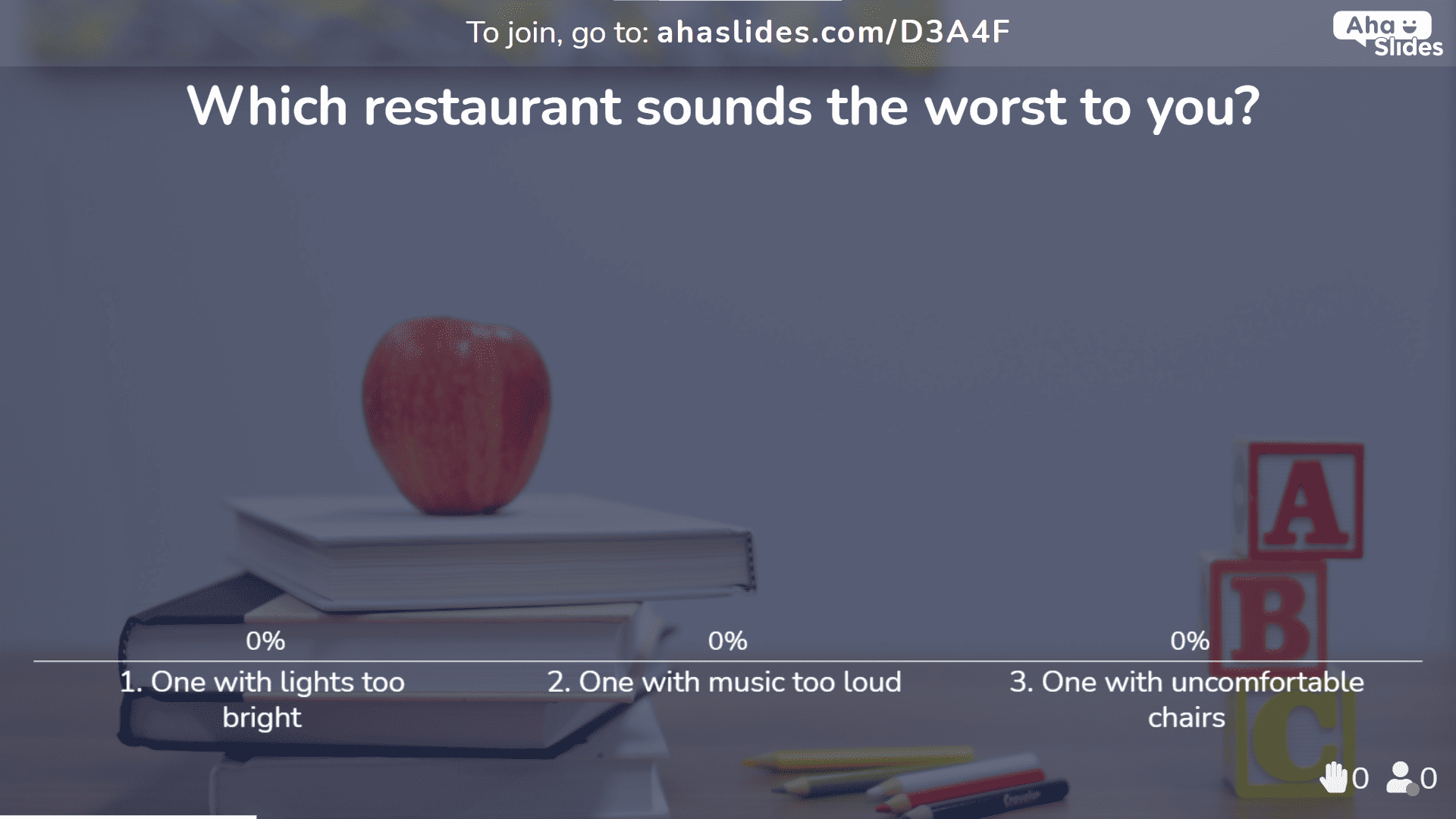
Gratis sjabloon
Beoordeling van leerstijlen
Ontdek de leerstijlen van uw leerlingen met deze enquête met 25 vragen over leerstijlen.
Probeer het gratis!
Om deze sjabloon te gebruiken:
- Klik op de knop hierboven om het sjabloon te zien.
- Bewerk alles wat je leuk vindt aan de sjabloon (vragen, kleuren, afbeeldingen, enz.)
- Deel het met je studenten via de unieke kamercode. Ze kunnen op alle vragen en discussies (al dan niet live) reageren door hun smartphones te gebruiken.
⭐ Psst, klik hier voor meer informatie over het gebruik van de leerstijlbeoordeling sjabloon.
12. Georganiseerde analyse
Stop ons als je dit al eerder hebt gehoord: examens zijn ver van de beste manier om de prestaties van uw studenten te beoordelen.
Consistente beoordeling gedurende het hele jaar is effectiever en sterk de voorkeur door de meeste studenten tot een eenmalig, stressvol examen aan het eind.
Edtech-analysetools helpen docenten om de prestaties van leerlingen te meten bij elke toets die ze maken. Dit is wat ze onthullen en hoe ze een enorm voordeel kunnen zijn voor online leren:
- Algemene resultaten (percentage studenten dat correct heeft geantwoord).
- Moeilijkste vragen (onthult de vragen met de minst goede antwoorden).
- Prestaties van elke student in de quiz.
- Prestatierapport voor elke student in vergelijking met hun eerdere prestaties.
Analytics is beschikbaar om te downloaden in een uitgebreide spreadsheet. Spreadsheets zijn super georganiseerd en eenvoudig te doorzoeken, wat een zeer welkome afwisseling is van dikke studentenmappen die overslaan met papieren beoordelingen.
Beter brainstormen met AhaSlides
- Live Word Cloud-generator | #1 Gratis Word Cluster Creator in 2024
- 14 beste tools voor brainstormen op school en op het werk in 2024
- Ideeënbord | Gratis online brainstormtool
De 8 nadelen van e-learning
1. Betrokkenheid is niet eenvoudig

Van alle voor- en nadelen van e-learning is dit waarschijnlijk de meest voorkomende opmerking die we horen.
Als je al eerder online les hebt gegeven, heb je vast wel eens een muur van zwijgende studentengezichten gezien. Niemand is betrokken, en dit is waarschijnlijk de reden:
- De studenten wennen nog steeds aan een onbekende omgeving.
- De studenten voelen zich overbelicht door hun gezicht op het scherm te hebben zodat iedereen het kan zien.
- De studenten worden thuis afgeleid door dingen.
- De studenten krijgen niet de kans om in groepjes te werken.
- De leerlingen zijn gewend aan actieve lessen.
- De docent weet niet hoe hij zijn/haar gebruikelijke aanpak moet aanpassen aan de online-leerlingen.
- De software die studenten gebruiken is te verwarrend of is niet goed uitgelegd.
Hoe dit te verhelpen…
Er kunnen echt een aantal redenen zijn waarom uw studenten moeite hebben om de focus te vinden die nodig is voor uw online les. Als leraar is het jouw taak om deze hindernissen met lessen uit de weg te ruimen so boeiend, zodat uw studenten hun ogen niet kunnen afwenden.
Het maken van boeiende online lessen is niet altijd even makkelijk, maar hier zijn een paar snelle tips die je direct kunt gebruiken:
- Gebruik live interactieve software (met live peilingen, quizzen en al die goede dingen waar we het over hadden boven).
- Gebruik ijsbreker activiteiten in lessen om de spanning in een vroeg stadium te verminderen. (We hebben een heleboel ideeën hier!)
- Gebruik breakoutruimtes op je videosoftware om te wisselen tussen solo- en groepswerk.
2. Niet iedereen heeft de technologie
Simpel gezegd kun je niet verwachten dat al je leerlingen de technologie krijgen die nodig is om deel te nemen aan online lessen. Sommigen komen misschien uit kansarme gezinnen en hebben mogelijk niet de financiële middelen voor een laptop, een goede internetverbinding of betaalde software.
Daarnaast zijn veel studenten minder bedreven met technologie dan anderen. Zelfs met de technologie, en zelfs met begeleiding, kunnen ze moeite hebben om erachter te komen hoe ze het moeten gebruiken.
Hoe dit te verhelpen…
Als je de macht hebt om dit te doen, is de beste manier om dit enorme nadeel van e-learning op te lossen, het te proberen asynchroon lerenDat is leren via vast materiaal dat op elk moment van de dag toegankelijk is zonder dat er een computer nodig is. leven virtueel klaslokaal.
Zo kunnen studenten waar en wanneer mogelijk deelnemen aan e-learning. Ze kunnen computers in de bibliotheek of bij vrienden thuis gebruiken om zich te verdiepen in hun studie, zonder dat ze gehinderd worden door het gebrek aan technologie thuis.
3. Technische problemen
We zijn allemaal wel eens in een situatie geweest waarin de voorheen feilloze technologie ons in de steek liet. nauwkeurig moment dat we het nodig hebben.
'Frustratie' is niet de juiste term en 'woede' moet je absoluut niet laten blijken tegenover je leerlingen.
Technische problemen gebeuren helaas. Ze kunnen grote schade aanrichten in virtuele klaslokalen, het uitroeien van de constructieve stroom van de les en waardoor leerlingen storend of volledig ongeïnteresseerd raken.
Hoe dit te verhelpen…
U kunt nooit een technisch probleem voorspellen, maar u kunt zich altijd voorbereiden om het probleem te omzeilen:
- Test! Lijkt voor de hand liggend, toch? Toch zijn er genoeg docenten die nieuwe software gebruiken zonder er vooraf grondig naar te kijken. Test elke functie die u twee of drie keer wilt gebruiken.
- Back-up! Zelfs na het testen kan een geheel nieuw, woede-opwekkend probleem uit het niets opduiken. Zoek software die een vergelijkbare service biedt als uw eerste keuze en maak er uw tweede keuze van.
4. Moeilijker om de klas te beheersen
We noemden al eerder dat een e-learningprofessional is dat het aantal begeleiding dat studenten krijgen online daadwerkelijk toeneemt. Hoewel er tools voor klasbeheer beschikbaar zijn, kunt u hiermee alleen individueel omgaan met studenten die zich misdragen.
Als er bij jou sprake is van een klassenrel, kan het lastig zijn om te weten wat je moet doen.
Hoe dit te verhelpen…
Er is geen one-size-fits-all-oplossing. Hier zijn een paar manieren waarop je je virtuele lessen kunt aanpakken. minimaliseer het risico van wangedrag:
- Kies het reglement duidelijk aan het begin van je cursus, of zelfs aan het begin van elke les.
- Maximaliseer de interactie tussen studenten in uw klas: zowel leraar-tot-leerling als leerling-tot-leerling.
- Bewaar dingen afwisselend – een stagnerende, saaie les is een broedplaats voor wangedrag.
5. Een-op-een lesgeven kan lijden

Ongeacht wie, wat of hoe u lesgeeft, zullen sommige van uw studenten een helpende hand.
In de fysieke klas kan een leraar gewoon door de kamer slenteren en iedereen helpen die hulp nodig heeft. In het virtuele klaslokaal wordt deze één-op-één-interactie ingewikkelder gemaakt door 29 andere studenten die allemaal meeluisteren.
Voor verlegen leerlingen of leerlingen met leerproblemen kan de gedachte aan zo'n openbare 'één-op-één'-bijeenkomst al voldoende zijn om geen hulp te vragen. Toch kan zo'n leerachterstand zeer schadelijk zijn voor hun toekomstige begrip.
Hoe dit te verhelpen…
Alhoewel u technisch gezien geen kantoor heeft, betekent dit niet dat u geen kantoor kunt hebben. virtuele kantooruren.
Door je leerlingen te laten weten dat ze altijd privé en online met je kunnen praten, geef je ze een grote stimulans om ook buiten de les om hulp te zoeken. Het op deze manier aanpakken van individuele leerproblemen is eerlijker voor je leerlingen en verstoort het leerproces van anderen niet.
6. Moeilijker voor studenten om te socialiseren
Wanneer uw leerlingen met plezier terugkijken op hun schooltijd, is de kans klein dat ze iets vertellen over de gebeurtenissen in 2020-21.
De zorgeloze dagen waar we als volwassenen altijd lyrisch over zijn, gaan aan een groot deel van deze generatie voorbij. Socialiseren is een enorm deel van school, en er is niets virtueels dat dit echt kan evenaren...
Hoe dit te verhelpen…
…Behalve videogames.
Als er ooit een moment is om videogames aan uw studenten aan te bevelen, nu is die tijd.
Voor veel studenten hebben multiplayer-games gediend als een sociale reddingslijn bij lockdown. Samenwerken in games kan een deel van de interactie, de eenheid en het simpele plezier die e-learning mist, vervangen.
Als uw leerlingen niet van spelletjes houden, zijn er een aantal geweldige online groepsactiviteiten voor kinderen hier.
7. Zoomvermoeidheid
Stel je voor dat je vroeger al je lessen 2 jaar lang in exact dezelfde kamer had. Geen leuk idee, toch?
Niet lang nadat je begint, zul je vrijwel zeker... vermoeidheid van de kamer Nou, studenten vechten tegenwoordig Zoom vermoeidheid het product van in dezelfde kamer zitten en meer dan 6 uur per dag naar een computerscherm staren.
Vooral jongere studenten hebben visuele en auditieve stimulatie, maar vaker wel dan niet biedt het virtuele klaslokaal dit niet. Het kan ertoe leiden dat ze hun focus tijdens lessen verliezen en ongemotiveerd raken om te leren.
Hoe dit te verhelpen…
Van alle voor- en nadelen van e-learning is deze waarschijnlijk het moeilijkst te doorgronden. Zoom-moeheid is een fenomeen dat zich in de loop van de tijd opbouwt en eveneens alleen kan worden tegengegaan met consistente en langdurige actie.
Bekijk deze leuke ideeën om vermoeidheid te verminderen:
- Versier je klaslokaal – Besteed tijd aan het maken van thematische decoraties met leerlingen rond het onderwerp van de les. Laat je leerlingen deze vervolgens thuis in hun klaslokaal ophangen.
- Themakostuums Geef als huiswerkopdracht een kostuum te maken dat gebaseerd is op het thema dat je behandelt. Leerlingen mogen alle materialen gebruiken, maar moeten hun kostuum wel uitleggen wanneer ze in de les komen.
- Spellen spelen – Educatieve games kunnen de aandacht scherp houden en de aandacht afleiden van het feit dat ze al in hun achtste Zoom-les van de dag zitten. We hebben een fantastische lijst met ideeën voor virtuele games. hier!
8. Gebrek aan beweging
Wist je dat na 10 minuten zitten, kinderen hun focus verliezen en zich slaperig voelen? Terwijl de tijd wordt uitgesteld voor oudere studenten, geldt hetzelfde principe: uw studenten moeten verhuizen.
Een van de voordelen van de voor- en nadelen van e-learning is dat er zowel flexibiliteit als stijfheid In termen van stijfheid gebruiken studenten meestal één stoel in het virtuele klaslokaal en hebben ze weinig reden om deze de hele schooldag te verlaten.
Naast het doffe psychologische effect dat dit op uw studenten heeft, moedigt het ook luiheid aan en kan het een zeer ongezond pad inslaan.
Hoe dit te verhelpen…
Bekijk deze fantastische hersenkrakers, die vooral bij jongere leerlingen wonderen verrichten...
- Multiple-choice bewegingen – Geef bij een meerkeuzevraag bij elke antwoordoptie een bijbehorende beweging. Leerlingen antwoorden door de beweging van hun gekozen antwoord uit te voeren.
- Speurtocht Geef leerlingen een tijdslimiet om alle huishoudelijke artikelen op een lijst te vinden en laat ze vervolgens op camera zien. Voor oudere leerlingen kunnen de artikelen conceptueler zijn.
- Elk van de korte hersenen breekt in dit geweldige artikel!
Effectief enquêteren met AhaSlides
- Wat is een beoordelingsschaal? | Gratis enquêteschaalmaker
- Organiseer gratis live vraag- en antwoordsessies in 2024
- Open vragen stellen
- 12 gratis enquêtetools in 2024
4 gratis tools voor het live virtuele klaslokaal
We hebben dus uitgebreid gekeken naar enkele voor- en nadelen van e-learning waarmee je rekening moet houden bij het live virtuele klaslokaal. Om de nadelen weg te nemen en de voordelen van online leren te benadrukken, heb je een behoorlijk groot toolbox.
Bekijk hieronder deze gratis e-learning tools…
Gereedschap #1 – Excalidra
Excalidraw is een gratis gemeenschappelijk whiteboard waarop jij en je leerlingen samen kunnen tekenen. Het is een geweldige tool voor illustrerende verhalen, visualiseren van concepten or spelletjes spelen!
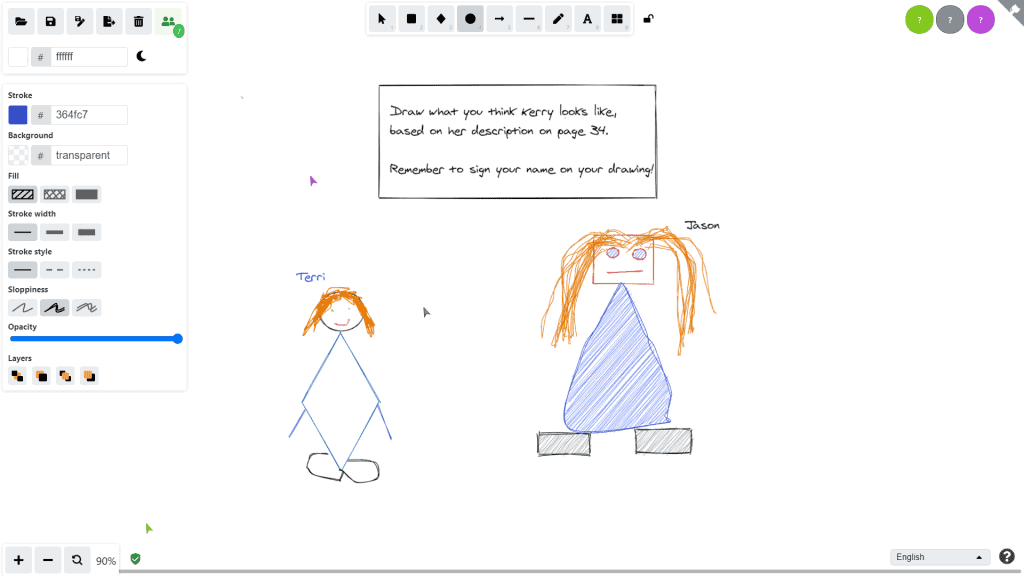
Gereedschap #2 – Veyon
Veel docenten aarzelen terecht om software voor schermbewaking in het virtuele klaslokaal te gebruiken. Maar, Veyon biedt veel meer dan dat.
Natuurlijk kun je met Veyon schermen monitoren en studenten uit sessies vergrendelen, maar het geeft je ook de mogelijkheid om de controle over schermen over te nemen, wat betekent dat je hulp bij werkbladen en breng correcties aan.
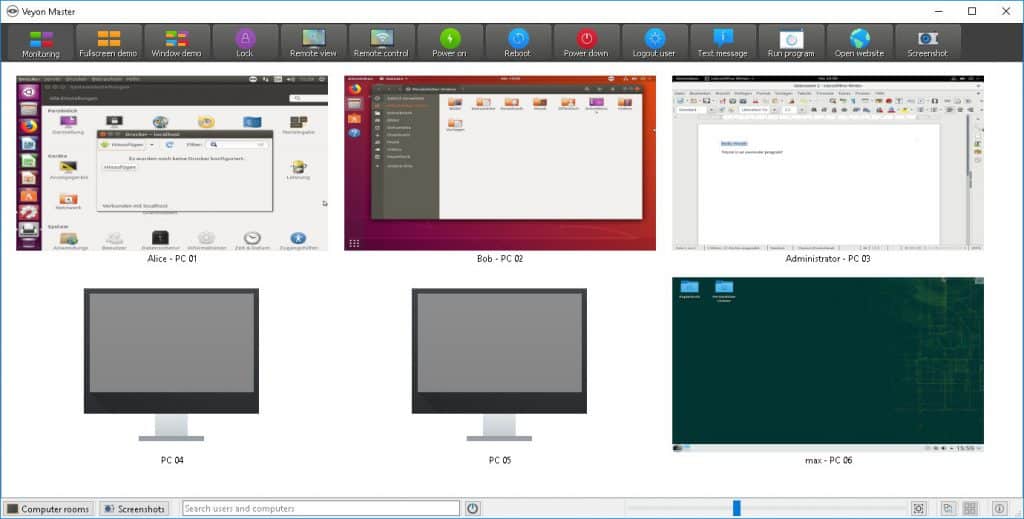
Gereedschap #3 – Flipgrid
Flipgrid heeft alles te maken met het bewaren van dingen sociaal in deze verre tijden.
Het is een gratis tool waarmee je een discussieonderwerp kunt creëren en dit exclusief met je leerlingen kunt delen. Vervolgens moedigt het leerlingen aan om een videoreactie te filmen waarin ze hun mening kunnen geven. praten, uitvoeren or iets bouwen gerelateerd aan uw onderwerp.
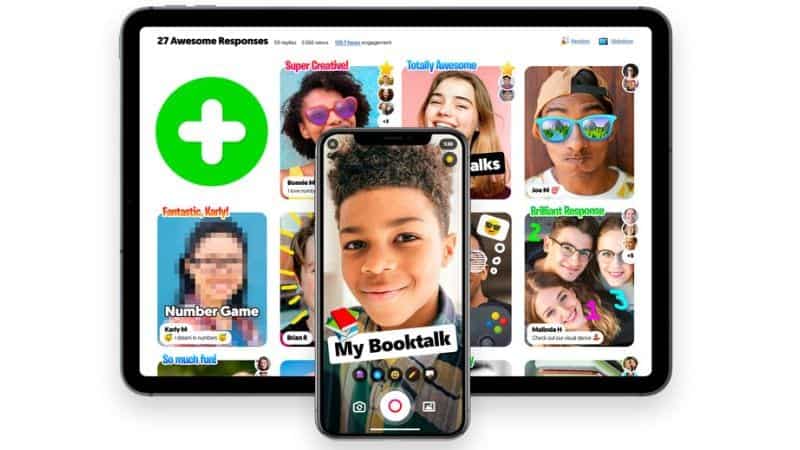
Gereedschap # 4: Ken de inhoud X
Als u nog steeds eenrichtingspresentaties van Google Slides of Powerpoint gebruikt voor uw online lessen, is het tijd om interactieve.
AhaSlides is een gratis tool waarmee studenten op uw vragen kunnen reageren, kunnen stemmen in uw peilingen en uw quizzen kunnen spelen en games live vanaf hun telefoon. Het enige dat u hoeft te doen, is de presentatie maken, de kamercode met uw studenten delen en er samen doorheen gaan.
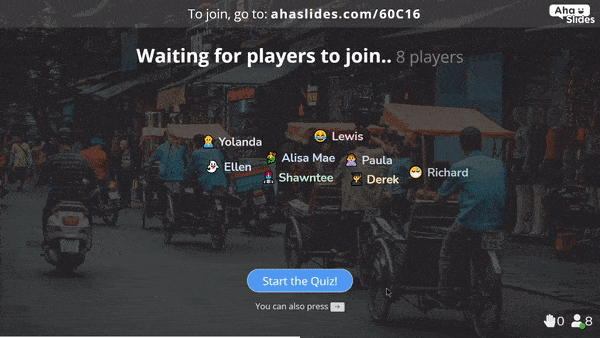
AhaSlides werkt ook voor asynchroon leren U kunt uw materiaal maken, uw peilingen en vragen toevoegen en uw studenten de cursus laten afronden op een tijdstip dat hen uitkomt.
⭐ Wil je het proberen? Meld u gratis aan bij AhaSlides door op onderstaande knop te klikken!
We hopen dat dit artikel over de voor- en nadelen van e-learning je heeft geholpen om de voor- en nadelen van online leren te verduidelijken. We hopen dat we je, op een bescheiden manier, een paar methoden hebben laten zien die je kunt gebruiken om je onderwijs aan te passen aan de digitale wereld. Cependant, dans ce cas, vous devez être très prudent.
Meer betrokkenheid bij uw bijeenkomsten
- Beste AhaSlides spinnerwiel
- AI Online Quizmaker | Maak quizzen live | 2024 onthult
- AhaSlides Online Poll Maker – Beste enquêtetool
- Willekeurige teamgenerator | 2024 Random Group Maker onthult



